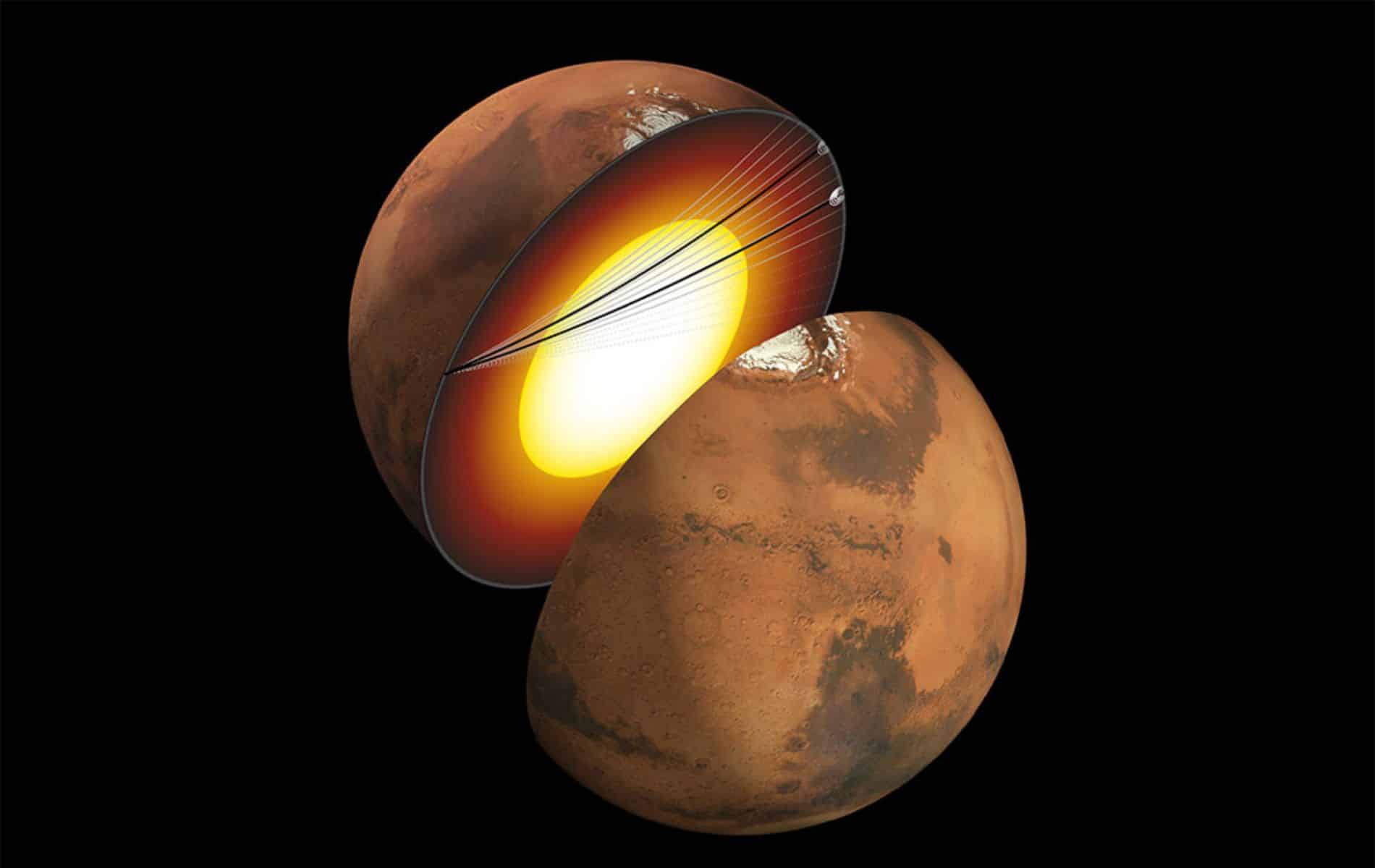It turns out that the core of Mars is not only liquid, but also made up of about a fifth of the light elements sulfur, oxygen, carbon and hydrogen.
For years, the late Insight probe searched for earthquakes. And with success: the probe detected more than 1,300 earthquakes during its working life. Researchers have now taken a closer look at some of these earthquakes. This resulted in the best picture yet of the size and composition of the Martian interior.
inside Mars
The discovery of the swamps was not an end in itself, but rather a means to better understand the Red Planet. Seismic waves travel through the crust, mantle, and core of the Red Planet and undergo changes under the influence of the different layers within Mars and the materials that make it up. By studying the waves and the changes they go through, researchers can better understand the thickness and composition of these inner layers. So they also hoped to get a better idea of what lies beneath the planet’s surface (such as water) and how the crust and deep interior are formed. This, in turn, provides more information about the formation of Mars as a whole and how the Red Planet – as well as other rocky worlds – formed.
end of insight
But last December, NASA had to put an end to the successful InSight mission. The probe, which spent years studying the internal structure of Mars, gradually lost power and fizzled out. Since then, researchers have been exploring the wealth of data Insight has collected with its seismometer in recent years. And in a new study, researchers examined two very special quakes, marking the first-ever direct observations of another planet’s core.
Seismometer Insight
The seismometer carried by InSight to detect earthquakes is about the size of a volleyball and was placed on the surface by the probe itself. This instrument allows scientists to “hear” seismic events from hundreds to thousands of miles away. And by measuring such earthquakes, scientists can learn more about the exact materials that make up Mars.
The two earthquakes, which occurred on August 25 and September 18, 2021, appear to have originated on the opposite side of the planet where the lander was – the so-called far sideearthquakes. It turns out that distance is crucial: the further an earthquake occurs from Insight, the deeper seismic waves travel through the planet before they can be detected.
Earthquakes on the far side
This means that InSight picked up seismic waves that traveled directly through the Martian core, an event that had not been recorded before. “It took luck and skill to find these earthquakes and then ‘read’ them,” says lead author Jessica Irving.far sideEarthquakes are hard to detect, because a lot of energy is lost along the way.” In addition, these two quakes were among the largest earthquakes Insight received. “If they weren’t so big, we wouldn’t have detected them,” researcher Bruce Banerdt said.
Mars core
By detecting seismic waves that have already passed through the core, scientists can improve their models of what that core looks like. The new analysis of the two exceptional Mars earthquakes now paints the clearest picture of the Martian core ever. However, it came with some surprises. The results primarily indicate that Mars’ core is – as previously suspected – liquid. Researchers now know more about the chemical structure. Previous studies had already indicated that the core should contain a significant proportion of the lighter elements in addition to iron and nickel. And now it turns out that about a fifth of the liquid core consists of elements such as sulfur, oxygen, carbon and hydrogen. Overall, Mars’ liquid iron core appears to be smaller and denser than previously thought.
Important
The fact that we now have a better picture of the Martian core is interesting. “Determining the amount of sulfur, oxygen, carbon and hydrogen in a planet’s core is important,” said Doyeon Kim. It expands our understanding of the conditions that prevailed in our solar system when the planets formed. In addition, it provides more information about how these conditions affected the planets that formed.”
The results published in the trade journal Proceedings of the National Academies of Sciences, to highlight the huge success of Mission Insight. The main goal was to study the deep interior of Mars so that scientists could better understand how rocky worlds — including Earth and the Moon — formed. Insight has delivered on that promise. By the way, there may be many more discoveries in the pipeline. It will probably be decades before all the data collected with his seismometer can be studied. Thus, researchers may uncover more surprises about the interior of our neighboring planet in the future.







